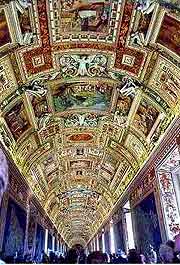Delhi has some of the finest museums in the country. Some of them are:-
Air Force Museum :-
Indian Air Force Museum is Located near Palam airport and it contents air craft’s, bullets, guns, uniforms and photographs of Indian Air Force. It provides an opportunity to have a complete insight into Indian aerial history. It also houses a War Memorial, which pays rich tribute to the pilots and airmen of Indian Air Force who made supreme sacrifice for the honor of the nation.
Timings :- 10 AM to 5 PM
Closed :- Monday, Tuesday & All National Holidays
National Museum :-
A rich collection of artistic treasures of India and Central Asia is displayed at National Museum, located at the junction of Rajpath and Janpath. It was built in 1960 and has an extra ordinary collection representing the entire span of Indian civilization from pre-historic times. Its galleries also includes artifacts from the Maurya, Gandhara, Gupta and other periods, copies of murals, Central Asian antiquities, textiles and decorative art, and anthropological and a handicrafts gallery.
Timings :- 10 AM to 5 PM
Closed :- Monday & All National Holidays
Indira Gandhi Smriti :-
Once the residence of late Prime Minister Indira Gandhi, 1 Safdarjung road today converted into museum “Indira Smriti”. Here once can get a glimpse of the life of the late Prime Minister Indira Gandhi and Rajiv Gandhi. It has the memorabilia of Indira and Rajiv Gandhi. The room, where has been she lives and the spot where she was assassinated at 31st October, 1984 are now exhibited. Mrs. Indira Gandhi’s speeches played through megaphones hidden in the bushes and bloodstains on the pathway are a solemn reminder of this great leader.
Timings :- 9:30 AM to 5 PM
Closed :- Monday & All National Holidays
Gandhi Smriti :-
The place where Mahatma Gandhi ji lived is now converted into a museum, called Gandhi Smriti or Birla house and it is situated at 5, Tess January marg. It also houses the photographs and other belongings of Gandhi ji. A pillar stands here are marks the place where the father of Nation Mahatma Gandhi ji was killed on 30th January, 1948.
Timings :- 10 AM to 5 PM
Closed :- Open all days (except all National Holidays)
Gandhi National Museum :-
Located opposite Raj Ghat across the road it houses the personal belongings, of Mahatama Gandhi ji, which include- his walking stick, spinning wheel, sandals, watch, spectacles etc. It also has an amphitheater and library. Gandhi Darshan, is situated opposite it near Powerhouse, also display the photographs of Mahatama Gandhi ji’s life. Here a film show also held every day. In the library, you can find lots of books written by Gandhi ji like A Gandhi Anthology, All men are Brothers, Mohan Mala (A Ghandhian Rosary), etc. . And many famous writer’s books which all are written on Gandhi ji or Gandhi ji’s thoughts like Encyclopedia of Gandhian Thoughts by Anand T Hingorani, Gandhiji And South Africa by E. S. Reddy, Mahatma Gandhi – A Biography by B. R. Nanda etc. .
Timings :- 10 AM to 5 PM
Closed :- Monday & All National Holidays
National Rail and Transport Museum :-
The unique museum, first of its kind in India is National Rail and Transport museum set amidst lush lawns at Shanti Path, Chanakyapuri. It has on display 26 vintage Locomotives, 17 quaint carriages and saloons and many interesting exhibits, which trace the centuries old history of the Indian Railways. Established on 1st February 1977, this museum is a must see site for everyone. Notable exhibits of this museum are “Fairy Queen (1855)" the oldest working steam locomotive still working in excellent condition, a tiny Darjeeling Himalayan Railway engine, luxurious saloon of the Prince of Wales, Mysore Maharaja’s saloon made of seasoned teak and laced with ivory and gold. There is also a toy train, which goes around the museum yard. Children can enjoy a ride on the miniature rail track.
Timings :- 9:30 AM to 7 PM (April to September), 9:30 AM to 5 PM (October to March)
Closed :- Monday & All National Holidays
Craft Museum :-
At Aditi Pavilion, Pragati Maidan this museum houses an impressive collection of folk and tribal arts, crafts and textiles. An added attraction is the presence of crafts persons who are brought here from different parts of the country to demonstrate their skills.
Timings :- 9:30 AM to 5 PM (July to September), 9:30 AM to 6 PM (October to June)
Closed :- Monday & All National Holidays
Doll’s Museum :-
Started as a personal collection of cartoonist Shankar in 1954 at Bahadur Shah Zafar Marg today converted in a museum and known as Doll’s museum, it has a fine collocation of more than 6000 dolls from all over the world. This museum also has a doll designing centre and children’s library.
Timings :- 10 AM to 5:30 PM
Closed :- Monday & All National Holidays
National Science Museum :-
Situated at Bhairom road, Pragati Maidan, Near Gate No. 1, National Science centre tells a fascinating untold story of Indian Heritage of Science & Technology. Here three distinct sections- early, medieval & modern era provides the science history of about 4500 years old.
Timings :- 10 AM to 9 PM
Closed :- Monday & All National Holidays
Nehru Memorial Museum :-
At Teen Murti house, where Jawaharlal Nehru lived for 16 years till his death in 1964 Nehru memorial is a part of imperial Delhi. It has a museum and a library, which vivid reminder of Nehru’s multi faceted personality.
Adjoining this Nehru Planetarium hold’s audio-visual shows “Life story of a Star”, “Through the probing eyes of voyager”,” Jawaharlal Nehru’s vision on space” in Hindi and English.
Timings :- 9:30 AM to 10 PM
Closed :- Monday & All National Holidays





































